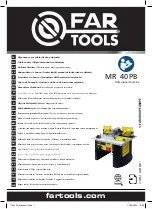
Introduction
3
•
WEP support.
Support for WEP (Wired Equivalent Privacy) is included. Key
sizes of 64 Bit and 128 Bit are supported. WEP encrypts any data before
transmission, providing protection against snoopers.
•
WPA-PSK support.
Like WEP, WPA-PSK encrypts any data before
transmission, providing protection against snoopers. The WPA-PSK is a later
standard than WEP, and provides both easier configuration and greater security
than WEP.
•
Wireless MAC Access Control.
The Wireless Access Control feature can
check the MAC address (hardware address) of Wireless stations to ensure that
only trusted Wireless Stations can access your LAN.
•
Simple Configuration.
If the default settings are unsuitable, they can be
changed quickly and easily.
LAN Features
•
4-Port Switching Hub.
The Wireless ADSL Router incorporates a 4-port
10/100BaseT switching hub, making it easy to create or extend your LAN.
•
DHCP Server Support.
D
ynamic
H
ost
C
onfiguration
P
rotocol provides a
dynamic IP address to PCs and other devices upon request. The Wireless ADSL
Router can act as a
DHCP Server
for devices on your local LAN and WLAN.
Configuration & Management
•
Easy Setup.
Use your WEB browser from anywhere on the LAN or WLAN for
configuration.
•
Configuration File Upload/Download.
Save (download) the configuration
data from the Wireless ADSL Router to your PC, and restore (upload) a
previously-saved configuration file to the Wireless ADSL Router.
•
Remote Management.
The Wireless ADSL Router can be managed from any
PC on your LAN or Wireless LAN. And, if the Internet connection exists, it can
also (optionally) be configured via the Internet.
•
Network Diagnostics.
You can use the Wireless ADSL Router to perform a
Ping
or
DNS lookup
.
Security Features
•
Password - protected Configuration
. Password protection is provided to
prevent unauthorized users from modifying the configuration data and settings.
•
Wireless LAN Security
. WPA-PSK, WEP and Wireless access control by
MAC address are all supported. The MAC-level access control feature can be
used to prevent unknown wireless stations from accessing your LAN.
•
NAT Protection.
An intrinsic side effect of NAT (Network Address Translation)
technology is that by allowing all LAN users to share a single IP address, the
location and even the existence of each PC is hidden. From the external viewpoint,
there is no network, only a single device - the Wireless ADSL Router.
•
Firewall.
All incoming data packets are monitored and all incoming server
requests are filtered, thus protecting your network from malicious attacks from
external sources.
•
Protection against DoS attacks.
DoS (Denial of Service) attacks can flood
your Internet connection with invalid packets and connection requests, using so
much bandwidth and so many resources that Internet access becomes







































